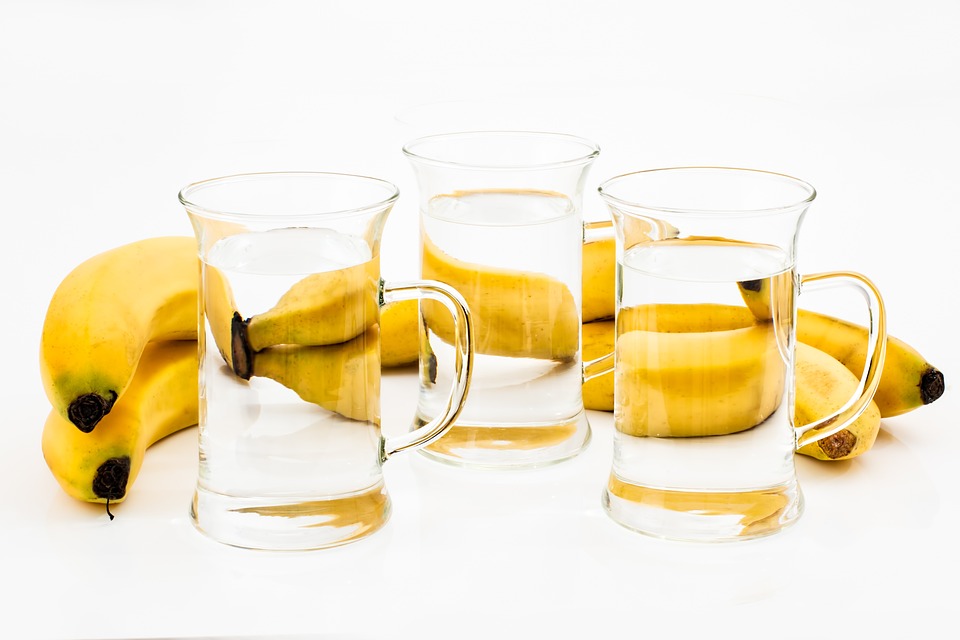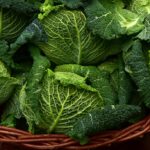Most people recognize how beneficial it is to have a nutritionally balanced diet. But you should place a special emphasis on potassium mineral. The U.S. The Department of Agriculture suggests that grown men and women should ingest 4,700 milligrams of potassium on a daily basis. Based on a study done by the International Congress of Nutrition in 2017, only a very small fraction of adults in the US, which is less than 3%, meet their daily requirement of potassium. Finding food high in potassium isn’t a difficult task. We don’t have to buy anything out of the ordinary at the market or take potassium pills to increase our consumption of this essential nutrient. Nearly every food group contains potassium-rich foods, with the body of a healthy person absorbing the nutrients from these foods well, according to Amy Goodson, a Registered Dietitian from Dallas.
Why You Need It
There is a lot of different advice around the types of food which make up a good healthy diet, making it hard to pick one mineral to focus on over any others. One person suggests that calcium is important, someone else emphasizes the value of iron, and a third person focuses on zinc. What significance does potassium have that necessitates paying attention to it? According to Goodson, potassium is a vital element that is present in the tissues of both animals and plants. Potassium is the third most plentiful mineral found in the human body, and plays a major role in the regulation of body fluids and electrolytes in humans and animals alike. However, its importance goes beyond just keeping our cells healthy.
The muscles in our body, particularly our heart, need potassium in order to contract and enable us to move and take part in exercise. Potassium and sodium collaborate to maintain the equilibrium of water and pH in the blood and the body’s tissues. Goodson states that the sodium-potassium pump works to produce muscle contractions, along with controlling the rhythm of a heartbeat. The potential for potassium and sodium to provide additional health advantages could be explored. Investigators in many fields of science are still striving to figure out definite answers. A separate report suggested that the advantages of consuming potassium-containing foods could mostly be tied to its impact on blood pressure levels: “it appears that the benefits of consuming a potassium-rich diet are likely predominantly connected to its consequences on one’s blood pressure.” Eating a diet rich in potassium has been linked to a decrease in blood pressure, especially when combined with a diet high in sodium. According to Dr. Goodson, potassium has the ability to affect the blood vessels in such a way that it lowers the pressure for many people. If you haven’t been feeling your best lately, take a look at your consumption of potassium and sodium. Studies conducted by Deakin University in Australia suggest that consuming a low-sodium diet which includes many foods abundant in potassium may help ease depression and anxiety symptoms. Consuming food items abundant in potassium can provide lots of advantages for your overall health, both mentally and physically.
Signs Your Body’s Craving It
Indicators of a lack of nutrients can be seen in our bodies through various forms. It might not be apparent all the time that you are not getting a necessary part of your nutrition. What are the signs that your body needs more potassium-rich foods? It can actually bit a little tricky, says Goodson. “There’s no one sign of potassium deficiency. Hypokalemia, a state of having too little potassium in the body, can cause tiredness and muscle spasms. It is possible to experience queasiness, disgorging, irregularity in the bowels, or a disrupted heart rate. She states that while these could be indications of a number of health conditions. Making sure to include plenty of potassium-containing foods in your diet and monitoring the amount of potassium you are taking in will usually help prevent any shortages of this nutrient. Those who lead an overly active lifestyle, experience an eating problem, or take some prescribed treatments (like certain hypertension medications) may not be able to keep their potassium levels in check merely with dietary intake. They might have to add potassium supplements to their diet. Goodson warns that these situations might require more fluid intake and an increased consumption of potassium. If you are not in optimal health lately and you suspect it is caused by a potassium deficiency, set up an appointment with your medical professional. A blood test can be used to determine your levels, and advice can be provided on steps which are best suited to your individual needs.
Potassium and Mortality in the Balance
Potassium is the positively charged ion often referred to as an electrolyte found in large quantities in the liquid inside of body’s cells, whereas sodium contributes in the same way in the liquid surrounding cells, including in blood plasma. Maintaining equilibrium between the two of them is a very intricate, complicated process that involves multiple hormones and organs, particularly the kidneys. For nerves and muscles to operate correctly, the levels of positively charged potassium (K+) and sodium (Na+) have to be relatively the same on both sides of the cell membranes. Whenever nerves activate or muscles spasm, electrolytes shift from one side of the cell membrane to the other. Sodium must be expelled from the cell, while potassium needs to be brought back in so that the cell is prepared for future activity. If either this delicate equilibrium or the continuous circulation is disrupted, nerves and muscles will not function correctly, posing a risk to both health and life.
Sodium serves an essential purpose in the plasma, particularly for keeping up appropriate flow of the blood, consequently it is considered to be essential for an ordinary blood circulation. It is natural to assume that reducing sodium intake would be the solution to bringing high blood pressure back down. This is true in cases where people have hypertension that is sensitive to salt, however, for the majority of people with high blood pressure, their condition is more complicated and is instead about maintaining a balance between these two electrolytes, as opposed to paying attention to periodically taking in sodium alone.
Researchers have carried out numerous examinations of this equilibrium, varying from looking into the consequences of brief, stringently maintained diets to the less stringent methodology of enlisting great numbers of individuals to list their dietary consumption and afterward computing their consumption of Na+ and K+. The results of studies focusing on self-reported food intake have not been particularly reliable, leading to more confusion than decisive conclusions about the ideal amount of these two electrolytes.
More recently, a larger scale of research has examined the exact amounts of sodium and potassium in a person’s urine in order to give a more precise closer look at what they have been eating. For instance, those with kidney disease tend to have lower death rates when their urine has more potassium in it. Results from the huge international PURE study conducted by O’Donnell et al. offered the most definite findings. Subjects involved in the study totaled 102,000 individuals from 17 different nations, and the researchers monitored their health and mortality over a span of 4 years. It was revealed in our article regarding sodium that the most minimal rate of fatalities happened in individuals who consumed 5 grams per day. This is around twice the current US-proffered standard for sound grown-ups. Mortality rates increase when a person has either exceptionally low or exceptionally high sodium intakes, creating a U-shaped graph.
The PURE Study provides a dissimilar report concerning urinary potassium levels. There is a clear link between having lower levels of potassium excretion and a higher risk of death, but reducing the amount of potassium being expelled through the urine up to 3 or 4 grams each day appears to lower the risk. The mortality linked with taking one gram per day is roughly double the mortality of taking three grams per day. Therefore, we suggest adding actual foods to a well-balanced diet in order to get 3-4 grams of potassium on a daily basis.
Practical Health Implications of Dietary Potassium
In order to appreciate the practical significance of varying dietary potassium intakes, here are three important questions:
- Realistically, how does this compare to the amount of potassium that the average adult consumes in a day?
- Is there a meaningful percentage of the population who eat less than 3 grams per day and thus may be at increased mortality risk?
- What happens to potassium intakes when people cut out most of their typical carbohydrate-containing foods?
Official Dietary Potassium Guidelines
What does this information compare to the official U.S. statistics? Recommended Dietary Allowance (RDA)? There is no definite guideline for the recommended daily allowance of potassium. The last group of people to look into this issue back in 2005 established 4.7 grams per day for adults as an adequate amount to consume. When not enough evidence is available to calculate a Recommended Daily Allowance (RDA), an Adequate Intake (AI) value is used instead. The committee that is responsible for making dietary guidelines is taking a look at the possibility of determining a Recommended Dietary Allowance for potassium, yet the release of their report is already delayed by almost a year. There is a great deal of disagreement when it comes to determining the perfect daily intake of potassium, notably because the vast majority of people consume much less than the current recommended daily intake of 4.7 grams.
The complexity of establishing the best dietary potassium values is due to the close relationship between the control of both sodium and potassium inside the body. Generally speaking, when diets are low in sodium, the body will secrete extra potassium in response to try to preserve the sodium. Thus, sodium restriction increases the need for dietary potassium. The levels of this activity are managed through various hormones, principally the stress hormone aldosterone. This has been thoroughly studied in a medical context, and the results have generally shown that cutting back on sodium in the diets of individuals with regular blood pressure levels amplifies that particular stress hormone more than three times its usual amount. It is not necessary to restrict sodium intake if one does not have salt-sensitive high blood pressure, and caution should be taken when following potassium guidelines that were studied in individuals on low-sodium diets.
Lite Salt™: a Backup Electrolyte Insurance Policy
Although the best way to get the necessary vitamins and minerals is through consuming whole foods, Morton’s Lite Salt is a good substitute when cost or availability of whole foods is an issue. This product is composed of a combination of sodium chloride and potassium chloride (290mg and 350mg for every ¼ teaspoon, respectively) and can be used to guarantee that electrolyte requirements are satisfied. For example, if you add a half teaspoon of this combination to food or either shop-bought or homemade broth, it can increase your daily intake of potassium by 0.7 grams, while adding a little bit of sodium too.
Potassium Supplements
According to federal regulations, the amount of potassium that can be taken without a prescription cannot exceed 99 mg in one serving. Different kinds of salts are available including potassium chloride, succinate, and gluconate. On average, each pill is priced at 5 cents or more, making it roughly 50 cents for one gram of potassium, that is equivalent to ten pills containing 99 milligrams. In comparison, 11 oz of Lite Salt (or a comparable item) is worth $4 and provides you with a gram of potassium for about 5 cents.
Beyond the Banana
The Office of Disease Prevention and Health Promotion provides an array of foods that are high in potassium, and here are a few that you can incorporate into your eating plan right away: potassium-rich foods.
White Beans
Beans are the most economical source of protein, making them a crucial part of a healthy diet for those who are keeping their expenses down. Add white beans to a soup with the flavors of Tuscany, puree them to make a dip, create a spicy chili with a Southwestern flair, or put some in salads for a burst of protein and potassium. Prepare a combination of bean-based blondies with pumpkin and chocolate chips to make a supremely healthy snack. Savory or sweet, the choice is yours.
Carrot Juice
Are you loyal to your morning cup of coffee? Think about replacing it with some carrot juice periodically. A single cup of the delightful bright orange beverage offers around 20 percent of the potassium required for one day. This food item has one-fourth of the suggested daily dose of vitamin B 6, which keeps potassium and sodium levels in sync. You can create juice at home with a juicer or purchase a container at your area health food store.
White Potato
If you’re looking for a healthy meal that can be made quickly, there’s no simpler option than baking a potato. White potatoes are among the highest sources of potassium that can be found in a market. Put a baked medium-sized white potato on a plate and top it with steamed broccoli, thinly cut bell peppers, and some shredded cheese for an enjoyable meal that boasts plenty of nourishment.
Tomato Paste
Do not discard the typically small amount of tomato paste that usually remains after cooking. A few spoonfuls of tomato paste can give you your daily requirement of potassium quickly. If you need additional motivation for including tomato paste in your diet, here are three great health benefits: higher levels of vitamins A and C and a source of dietary fiber. You could prepare a filling bean salad with tomato paste, put it on English muffins to make individual pizzas that can be customized, or use it as the basis for spaghetti and meatballs.
Edamame
These green pods might just be mini health miracles. This food has a great nutrient-to-calorie ratio, as it is low-fat and has a high concentration of protein, fiber, iron, and vitamin C without a high amount of calories. Boil some edamame as a potassium-packed snack for the next time you are planning a movie marathon on the couch. A suggestion: Sprinkle some chili, garlic powder, or Parmesan cheese on edamame to make the snack even more delicious.


